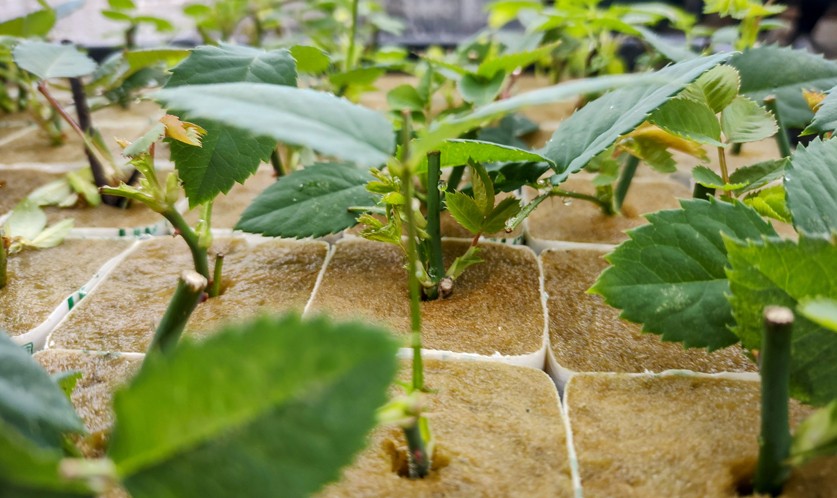Roses are one of the most popular flowers among people. Many gardens have these beautiful plants despite their thorns. Their great beauty and pleasant fragrance make them a success. However, it can be a bit difficult to reproduce them. For it, the simplest and most money-saving way is through cuttings. So, do you want to know how to plant rose cuttings and which substrate to choose?
Of course, the answer is rock wool.
Rockwool is a mainstay growing media for commercial hydroponics planting. Mainly used for drip irrigation systems.
Rockwool was originally used as insulation it is also known as mineral wool or stone wool and was developed in Denmark back in the 1970s for gardening. UPuper® rock wool is made from natural rock and melted at 1500℃. It has no pathogenic bacteria or toxic or harmful substances. It provides a pollution-free root environment for growing rose plants.
At the same time, the rock wool substrate is made of pressed rock wool fibres, which have large porosity, excellent air permeability and water retention. Provide a high-quality growth environment for the root system of the rose, and the internal three-dimensional network structure makes the nutrient distribution more uniform, which is conducive to the extension and growth of the rose root system.
Using rock wool as the rose cloning substrate is conducive to the rapid rooting of rose cuttings without pests and diseases.
TO GROW A ROSE FROM A CUTTING YOU WILL NEED:
1. Adjust the PH of Rockwool.
The factory pH value of rock wool is relatively stable, and each batch is between 7.0-8.0. In order to give roses a more suitable growth environment, it is recommended to adjust the pH value first.
The pH value is generally adjusted to 5.5-6.5 for rose-cutting seedlings.
2. Choose a well-grown current year's stem of a rose.
The rose you choose needs that have finished flowering about 8” long for a hybrid tea rose, or 4”-5” for smaller landscape roses. It should be healthy, disease free, green and slightly flexible but not floppy, and should ideally have 4-5 leaf nodes. Place the bottom in water immediately after cutting.
3. Prepare the rock wool substrate, such as UPuper® rock wool mini blocks or CP 36T rock wool sheet.
4. A seedling tray, to put the rock wool sheet into it.
5. A sharp knife or sharp pruner – sterilized with alcohol.
6. Some cutting powder. (not essential but produces better results)
Method
Rose Cloning
• Soak the rock wool in acidic water to decrease the pH. Adjusted to 5.5-6.5.
• Put a little rooting hormone in a shallow container such as a jar lid.
• Prepare cutting material. Cut the base of the stem straight across just below a node and cut the top off at an angle just above the 4th or 5th joint. Remove leaves from the bottom three nodes but leave some leaves at the top of the stem. If these leaves are large cut them in half to reduce transpiration while the roots are forming.
• Dip the end of the rose cuttings into a rooting hormone.
• Put the treated rose plants into a rock wool plug.
• The lid of the seedling tray is screwed on to keep the humidity during the growth of the plant.
• Label with a variety of known a description of the flower.
• From this point on until roots are established, it is important to make sure that the cutting does not dry out. I usually irrigation from the bottom, but also keep an eye on the surface moisture.
• Roots may form in about 6 weeks, but usually take about 8 weeks, and once new growth has begun the cover can be removed and care is the same as for any young plant.

Transplant
Most softwood rose cuttings will root within 10 to 14 days. To test their progress, tug very gently on the cuttings. You'll feel a slight resistance as the new roots form and grow into rock wool. Once roots are established and plants show strong new growth, you can transplant your new roses to rock wool cubes for growing.
There will be a lot of knowledge sharing about rock wool planting in the future. If you are also interested in rock wool hydroponics cultivation, please Subscribe to the website of UPuper®. We will share more interesting and useful methods and knowledge about Rockwool hydroponic planting.








